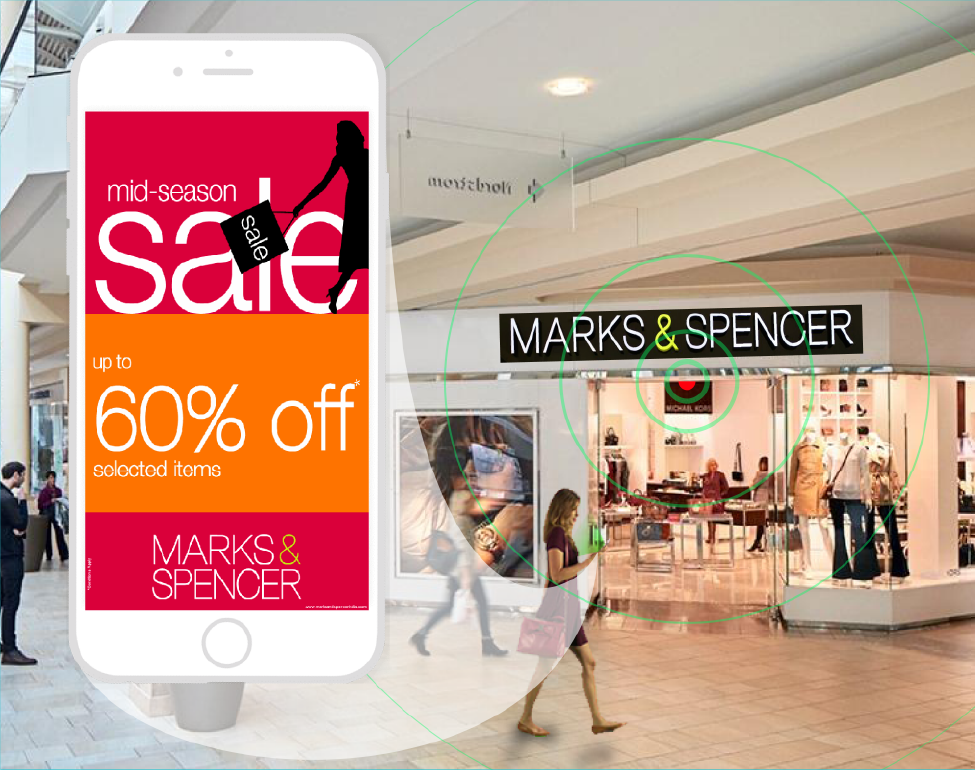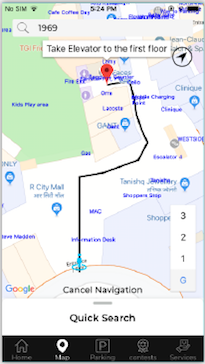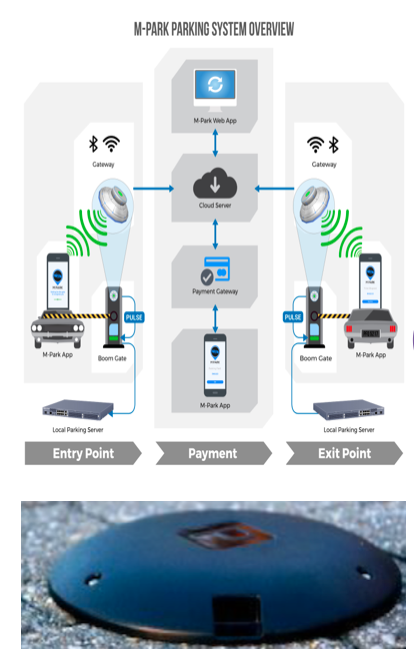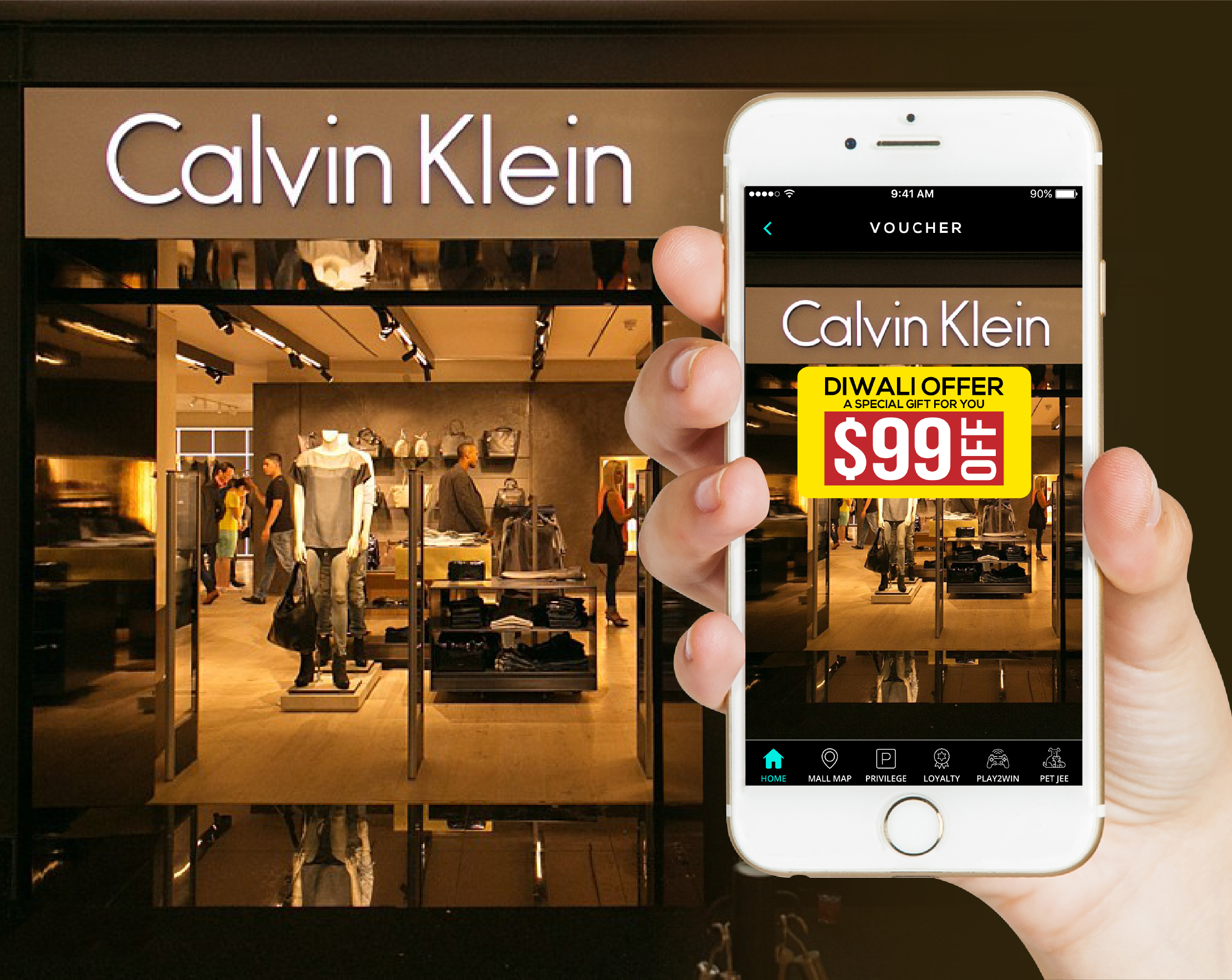Proximity Marketing Solution for Shopping Malls
Proximity Marketing Devices based intelligent solutions taking a shopping mall user experience to the next level
What is Proximity? Proximity is all about the relevant physical data that can be used to help make interactions more meaningful and relevant. So, Proximity Marketing is all about using this data and putting it to use in a way that the shopper of today can receive the right message, at the right time, at the right location, and to the right person. According to a survey done by JiWire, 53% of shoppers are willing to share their current location to receive more relevant advertising.
Every shopper does carry at least one mobile phone and is most likely to engage with a relevant message, if, it’s delivered to them at the right time and at the right location. Using Proximity Marketing Devices, a marketer can leverage the technology to customize messages to each individual. By making these messages more personal and context-sensitive, engagement with a customer can add considerable value and increase ROI.
FEATURES OF PROXIMITY MARKETING SOLUTION – SHOPPING MALLS

PROXIMITY MARKETING ENGINE
Proximity marketing devices placed inside a mall can easily detect the movement of shoppers and identify the shoppers. Once identified, the Recommendation Engine kicks in to get the history of the shopper’s shopping pattern, visit history, and dwell time. The engine uses this information to analyze the shoppers’ shopping behavior and send targeted and relevant messages to the shopper in real-time and assist in immediate conversions. This strategy gives a real-time recommendation to the shopper and helps the retail establishment effectively communicate with the shopper.
INDOOR NAVIGATION
Our Indoor Navigation Solution uses beacon and gateway technology to help the shopper navigate inside a mall. The application on the shopper’s phone automatically identifies its indoor position and determines the next course of action. Once a user searches for a store, the application helps the user navigate to the store using step-by-step navigation available which can be made available in 2D, 3D, and Camera Versions.
While on the map, a shopper can see offers from various stores. These could be general offers or app-only-based offers. Navigation can be extended to parking spaces too, helping to easily find a car in the parking lot.


AUTOMATED PARKING SYSTEM
- PARKING ASSISTANCE can be automated by installing QuicSolv Gateways on each boom barrier. These communicate with the app to authorize a boom lift.
- APP BASED PAYMENT for parking.
- INTEGRATION OF LOYALTY.
- PARKING SLOT ADVANCE BOOKING can be made by shoppers before entering the mall on the app.
- PARKING NAVIGATION – Once the shopper reaches the mall, the app can navigate the shopper to the parking slot (fitted with occupancy sensors).
AUGMENTED REALITY SHOPPING
- VIRTUAL OFFERS – Stores can sprinkle virtual deals and the app can find these deals in the pokemon-go style
- GAMING -SCAVENGER HUNT – A scavenger hunt using augmented reality can not only be fun but also get the shoppers acquainted with the mall
- DELIGHTFULLY INTERACTIVE – Virtual offers using AR, have the ability to be delightfully interactive. Stores can immediately measure the effectiveness of the offer


DISCOUNT VOUCHERS
- PUBLISH GENERAL DEALS – General deals that are made available to all the shoppers can be made available on the app.
- PERSONALIZED OFFERS based on visit history and shopping patterns can be given when the shopper is not on the shopping journey.
- VOUCHER ALLOCATION – based on past purchase history.
- REDEMPTION of Vouchers can be done integrated with loyalty programs.
RETAIL LOYALTY PROGRAMS
- LOYALTY POINT ACCUMULATION can be done in various ways including app installation, the number of visits, purchase volume, refer a friend, purchase frequency, etc.
- LOYALTY PRIVILEGES could include free parking, a lounge facility, special reservations, etc.
- LOYALTY POINTS REDEMPTION can be done against purchases, special vouchers, transfer of points, restaurant reservations, etc.

KEY BENEFITS
Increased Footfalls
The better customer experience, better discounts and Loyalty program will drive more customers to be coming back to the shopping mall, thereby there will be an increase in footfall.
Value-Added Sales
The system would help provide stores with valuable information in terms of the Store capture rate, Spot offers, Signages and Conversion Rates, as well relative indexes in terms of comparisons with other similar stores. They can also provide target campaigns using the shopping profiles of customers.
Better Customer Experience
The overall customer experience is enhanced because the shopping mall is using proximity marketing to identify the shopper’s location and identity and serve messages in real-time, thus communicating with the shopper during the shopping journey.
Business Insights
A real-time Marketing Dashboard provides businesses with various information like the footfall metrics, Loyalty metrics, Heatmaps of the footfall, flow of the footfalls, path analytics. These would also help find the effectiveness of marketing campaigns thereby get a better ROI.
WHAT ARE THE CHALLENGES FACED BY SHOPPING MALLS TODAY?
Today Shopping Malls are facing big challenges, not only against it’s, most fierce competitor – eCommerce, but internally as well, where measurement of customer data, visit history, shopping patterns, preferences is not available in a way where the data can be analyzed, and strategies can be improved upon. Some of the fundamental challenges that a retail establishment like Malls are
- Store and brand owners constantly demand a higher footfall to the mall
- There is no way to engage with an anonymous shopper
- The retail mall’s marketing departments have no way to quantify a campaigns success or even the ROI
- As malls are becoming larger, navigating inside a mall is becoming increasingly overwhelming even for a regular shopper
- Mall based loyalty programs are difficult to implement and sustain
HOW CAN SHOPPING MALLS USE PROXIMITY MARKETING?
By connecting digital users to the real world, marketers of a shopping mall will be able to drive real-time consumer engagement throughout the consumer journey across both physical and digital touch-points. A shopper’s mobile phone is the only connection between the shopper and the mall. So, the mall of the future must be able to give the shopper of today –
- Deal alerts are not only based on proximity to the store or brand but also based on the shopper’s visit history, dwell time and loyalty.
- A directory where a shopper can easily search for a store by name, type or product
- An Indoor navigation facility so that the shopper can; not only locate a particular store and navigate step by step like we do on google maps but also use it to find facilities like washrooms, elevators, ATMs, etc.
- Rewards for their loyalty by offering facilities like a lounge or free valet parking etc. to the premium shopper.
WHAT ADVANTAGES CAN A SHOPPING MALL GET BY USING PROXIMITY MARKETING?
With continuous access to new and changing data in real-time and a little help from Artificial Intelligence-based Recommendation Engines; the marketing department of a shopping mall will be able to change their engagement strategy to ensure they stay relevant and on top of mind of the shopper with the ability to move beyond the promotion stage.
Proximity Marketing Devices will be able to collect, quantitative customer and location data based on visits, dwell time and customer profiles. Deep learning systems running on this data, will learn more about customer preferences and behaviours. Using the real-time location of the customer and their past visit history and dwell time, marketing systems based on artificial intelligence will be able to send real-time messages to the shopper to help complete the shopping process. Rewards on instant purchase will motivate them and loyalty programs will make sure they come back for more and thus target more shoppers with offers that are actually relevant to them.
